


Eragar
gamer level 6
9691 xp
9691 xp
followers
14
14
Use my invite URL to register (this will give me kudos)
https://boardgaming.com/register/?invited_by=eragar
profile badges
...
...
...
...
recent achievements

Baron / Baroness
Gain 10 total followers
Gain 10 total followers

Novice Reviewer
Review 5 games and receive a total of 140 positive review ratings.
Review 5 games and receive a total of 140 positive review ratings.

Rated 100 Games
Rate 100 games you have played.
Rate 100 games you have played.

The Silver Heart
Give 10 Silver Hearts to games that you fancy.
Give 10 Silver Hearts to games that you fancy.
Player Stats
Critic (lvl 2)
555 xp
555 xp
Explorer (lvl 2)
350 xp
350 xp
Professor (lvl 2)
587 xp
587 xp
Reporter (lvl 0)
71 xp
71 xp
About Me
Starting with Candyland, I have been playing and loving tabletop games. Now nineteen and in college, I am hoping to make a career out of game design and development.
I just started a blog which will feature game reviews, tips, and strategies. You can find it at mathematiciangamer.net


























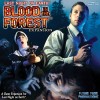





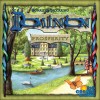









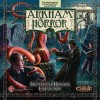




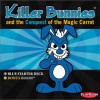

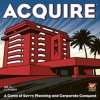


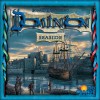

![Go to the Level 7 [Omega Protocol] page Go to the Level 7 [Omega Protocol] page](https://boardgaming.com/wp-content/uploads/2013/06/LEVEL-7-Omega-Protocol--100x100.jpg)







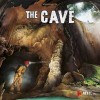
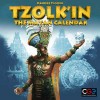



Dominion
“You are a monarch, like your parents before you, a ruler of a small pleasant kingdom of rivers and evergreens. Unlike your parents, however, you have hopes and dreams! You want a bigger and more pleasant kingdom, with more rivers and a wider variety of trees. You want a Dominion! In all directions lie fiefs, freeholds, and feodums. All are small bits of land, controlled by petty lords and verging on anarchy. You will bring civilization to these people, uniting them under your banner.
But wait! It must be something in the air; several other monarchs have had the exact same idea. You must race to get as much of the unclaimed land as possible, fending them off along the way. To do this you will hire minions, construct buildings, spruce up your castle, and fill the coffers of your treasury. Your parents wouldn’t be proud, but your grandparents, on your mother’s side, would be delighted.”
~ Back of the box
Dominion is a deck-building game for 2 to 4 players with a theme of the players being budding monarchs trying to raise up an empire for themselves. To set up the game, you take all of the 3 types of Victory cards shown in the picture below and set them on the table.
You also take all of the Treasures and set them on the table.
The other cards are the ones that make the game interesting. There are 25 different Kingdom cards in the box (with 10 of each). After pulling out the Victory cards and the Treasure cards, you will choose 10 of these 25 Kingdom cards (either randomly, or however you like) and add them to the game as well.
Finally, each player is dealt a deck of 7 Coppers and 3 Estates–Representing the land they own and the resources available to them. These 10 cards are shuffled and the game is ready to begin.
Gameplay is fairly straightforward–You start by drawing 5 cards off the top of your deck. When it is your turn, you can play 1 Action card (As noted on the bottom strip of the card), which will have 1 or more special effects. Some Actions–like the Village–will allows you to play more Action cards and utilize their effects.
After you have played all of the Actions that you can or want to play, you go into the Buy Phase. You count up the money you have (If you had 1 Gold and 1 Copper in your hand, you would have 4 coins) and then Buy 1 card with value equal to or less than that. You cannot Buy 2 cards that each cost half of the coins in your hand–Unless, of course, you played an Action that gave you an extra Buy.
Once you’ve bought an cards you can and want to Buy, you discard your hand, draw 5 more cards and end your turn. (If you run out of cards in your deck, you just shuffle your discard. This will happen a lot during the game)
The game immediately ends either when any 3 piles no longer have cards in them (so if the players have collectively bought all of the Villages, Duchies, and Workshops, the game is over), or when all of the Provinces have been bought. The player with the most victory points wins (If there is a tie, it goes to the person who has taken the fewest turns. After that it is just a joint win).
But here’s the tricky bit–Victory cards don’t do anything for you during the game. The more Victory cards you have in your deck, the more likely you are to draw them, the less likely you are to draw something useful, the less likely you are to have the money you need to buy Victory cards, the fewer Victory cards you’ll be able to get, the less likely you are to win the game. Trying to start buying land for your kingdom too soon will only result in you not being able to put your resources to use buying the things you really need.
The Stats
Complexity: 5.75/11
Dominion is really not a difficult game to figure out.
Components: 6/11
Cards: 5/11
Not anywhere near as good as the cards in Smash Up, but still okay. Sort of. The edges tend to fray a bit.
Rulebook: 7/11
The rulebook is actually 2 small booklet things. There is a booklet for the rules, and then a second one that explains all of the cards. Not super-great quality, but okay.
Cost Value: 7/11
$31 for a fairly replayable game with okay component quality. Not bad.
Replayability: 8.25/11
25 different Kingdom cards. Only 10 in each game. 3 268 760 combinations. Granted, most of those are practically the same. Overall it makes for a few hundred unique games. Very nice.
Strategic Elements: 9/11
Dominions is an action-reaction game. If your enemies don’t have Attack cards, a Moat is not a card you should ever pick up. But if they start buying Witches and Militias, you had better pick a couple up.
The other bit of strategy comes with the card synergies you can get. Throne Room and Smithy both out–better pick them up. Don’t get Gardens unless there are cards that give you extra Buys. The strategy here can often be quite deep.
There do seem to be a few cards that you just always want to matter what. Village, Laboratory, Spy, but there aren’t too many of those.
Social Value: 6.417/11
Ease of Teaching: 8.25/11
Easier to teach than Smash Up (I really do compare these 2 games a lot. Hmm). Not a whole lot else to say there.
Discussion During Play: 5/11
Not really much of this, as you’re all building your kingdoms separately, and the things that affect other players affect all other players.
Discussion After Play: 6/11
Not actually much of this either, except for the discussion on why so-and-so won and what the other players could have done to change that.
Thematic Value: 9.5/11
For a game that’s just a bunch of cards, Dominion is surprisingly thematic. I often lay out my deck at the end of the game and see what kind of a kingdom I’ve come up with. Do I rule over lots of Villages that are feeding me peasants to do more things (+2 Actions). Have I started a Mine to make me richer? Do my Spies steal or plant false information that slow down the bureaucracy of my enemies? Have I dug Moats around my castle to keep out enemy Spies and Thieves? Your kingdom is truly unique each game, and you can see how it grew throughout play. It’s honestly really cool.
Rules Clarity: 10/11
As already mentioned, there is a second book that comes with the game that explains every single one of the cards and how they work. This is all the FAQ you will ever need, and is perfectly clear. The rulebook itself has some pictures a diagrams that clear up any questions you would have about turn structure and such.
Balance: 7.25/11
With all of the same cards available to everyone, Dominion is pretty balanced. There are a couple of issues, however. The first player has a slight advantage, as they will get to the cards they bought in rounds 1 and 2 before anyone else. And the players who draw all Copper in their starting hand (or second-turn hand) can have either an advantage or a disadvantage depending on the cards that are out. Sometimes that is all the difference it takes to win or lose a game.
Fun Level: 8/11
This last element is a little bit arbitrary. It is my true rating of the game, regardless of averages (I tend to enjoy most of the games I have played). This is just a simple scale to 10 11, with no averages or equations or careful logic. Just about how much I like playing the game.
GRAND TOTAL:
7.935/11
Dominion is a solidly good game, especially when adding in expansions. I would recommend it to most people.
If you enjoyed this review, please check out my others at mathematiciangamer.net